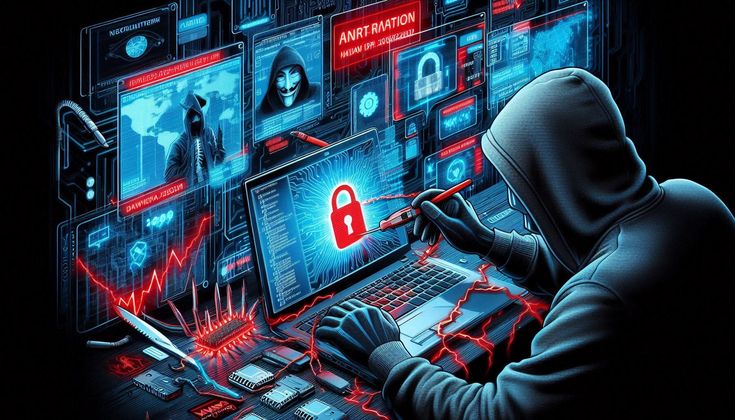Introduction
Today we discuss protecting data from hackers. Well, if you’re extracting data from a vulnerable web application, it’s just a matter of time before your numbers get compromised. Given the increasing number of cyber threats, people and organizations need to come forward to prevent the data leakage. Identity theft, financial losses, and reputational damage are possible consequences of data breaches. In this article, we explain the key ways to keep your data safe and reduce the risk of a cyberattack. These steps help provide better security and safeguard your valuable information.
The Threat Landscape: What Are You Dealing With?

To protect your data, you first need to understand what it needs protection from. By October 2023, hackers had developed methods that took advantage of the systems vulnerabilities. Some common threats are phishing attacks, ransomware, and malware. Being aware of these risks will help you to prepare yourself as well as your organization. By understanding the types of cyber threats, potential dangers, and key security measures, you can better protect your sensitive information.
Use Strong, Unique Passwords
Strong and unique passwords are among the easiest and most powerful ways to secure data from hackers. Steer clear of birthdays or common words that people could guess. Instead, use complex passwords that incorporate uppercase letters, lowercase letters, numbers, and special characters. Also, ensure you use different passwords for each account so that one compromised account doesn’t put all of them at risk. Using a strong password is your first line of defense against unauthorized access.
Consider Enabling Two-Factor Authentication
Two-factor authentication (2FA) is another layer of security for your accounts. Two-factor authentication (2FA) adds a second layer of security to the login process, making it more challenging for hackers to access accounts. If a hacker gets your password, they will still require the second factor to sign in. Enabling 2FA on all accounts where it is available offers a huge boost to your security and helps to guard your data against unauthorized access.
Keep Software Up to Date
Updating your software regularly is essential to safeguard data from hackers. Software updates frequently include security patches that address vulnerabilities hackers can exploit. This is true for anything: operating systems, applications, antivirus programs. Keep an eye out for those updates and install them as soon as possible. Updating your software ensures any vulnerabilities are patched and that devices have the most up-to-date security features.
Install Antivirus & Anti-Malware Software

To keep your data protected, you must invest in good antivirus and anti-malware software. These programs are designed to find and eliminate malicious software that can put your system at risk. instigating periodic scans to detect imagined risks and keep your software continually functioning with the most recent definitions. You can also choose to have your computer have real-time protection, which will notify you of suspicious activity. Good antivirus solutions are the first step in defending against cyber threats, helping to avoid your information from falling into the wrong hands.
Be Wary of Phishing Attacks
One of the most popular ways hackers steal sensitive info is by using phishing. Commonly include emails or messages that seem to be from trusted entities, leading users to click on harmful links or enter sensitive data. Always be cautious and check and verify the sender and do not click on foreign links to save your data. Learn the signs of phishing attempts to avoid becoming a victim of these scams.
Secure Your Wi-Fi Network
One of the best things you can do to protect data from hackers is to secure your Wi-Fi network. Make sure your network is password-protected and use a strong, unique password. Change the default network name (SSID) to something that is less recognizable; this can be a deterrent to potential hackers. You can also turn off your SSID broadcast, which will make your network less visible. As a precaution, periodically check and remove any unidentified connected devices to keep control over your own network and data.
Back up Your Data Regularly
Data backup—backing up your data regularly is a key aspect of the data protection process. This means having at least two copies of your information on separate devices, and secure backups will ensure you do not lose valuable information in the case of a cyberattack, like a ransom attack.
There were incentive programs for long-distance walking and a click to give so employees would run in place, despite their computers providing 99 petabytes of cloud storage or 22 million external hard drives. Your backups must also be encrypted and stored securely. Regularly creating up-to-date backups will ensure you can easily restore your data when it gets compromised, reducing the impact of a cyber incident.
Learn with your team

A significant component of protecting against hackers is the education of data. Environments Beware of Data Loss Prevention If you lead a team, be sure to have training from time to time to make them aware of the security protocols and risks. Motivate team members to promptly report any suspicious activity and develop a culture of awareness toward data security. A team that’s aware is more prepared to identify threats and act accordingly to protect sensitive data.
Keep a close watch on your accounts and credit reports
It is important to continually monitor your accounts and credit reports to discover any unauthorized activity as soon as possible. Establish alerts for transactions on your financial accounts and check your other statements regularly. Try to quickly report any suspicious transactions that you may notice. Third, get a free credit report every year to look for signs of unusual activities. Monitoring Your Accounts: If you’re alert and watching your accounts, you’ll be able to identify the problem early and protect your data from future breaches.
Conclusion
As the world is becoming more and more digital, securing data from hackers is a must for both individuals and corporations. Following through on the key points in this article can go a long way toward improving your data security. The use of strong passwords, two-factor authentication, regular software updates, and effective antivirus solutions are a few of such efforts to help protect your information. By being vigilant and building a security-first mindset outside but also inside your organization, you can safely navigate the waters of the digital world while minimizing threats to your own sensitive information.




